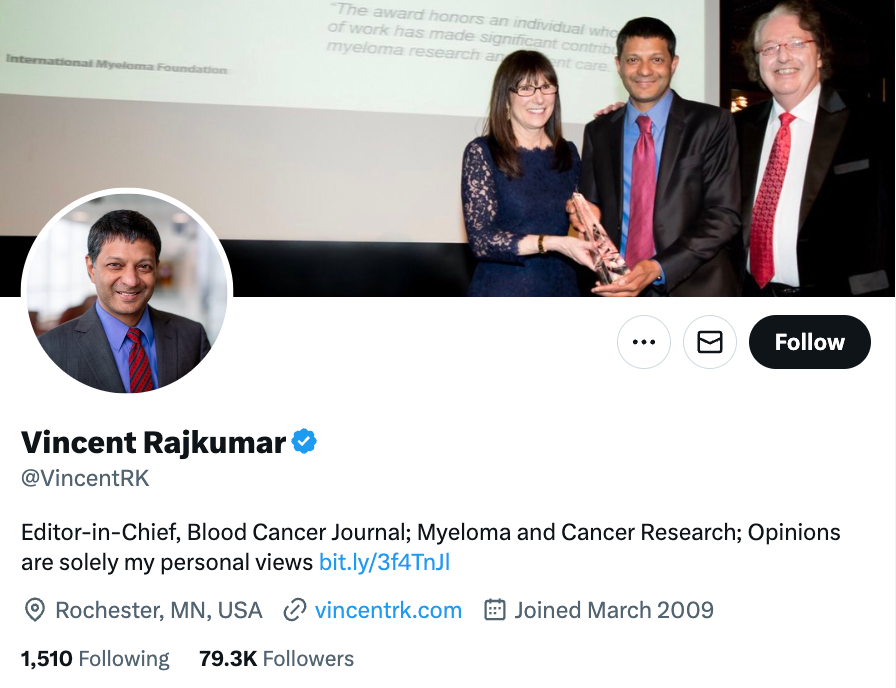Discover 2 new types of HCPs for marketers to follow
Most likely, you know who your target KOLs are. You probably have lists of KOLs segmented by location, tier, type and other criteria.
But how to discover your blind spots? How do you find new types of HCPs that you aren’t following yet?
Read on for suggestions…
Here are two types of HCPs that marketers often overlook:
Digital opinion leaders (i.e., “DOLs” or “digital influencers”)
Local influencers
Digital opinion leaders
DOLs are HCPs who are influential on social media. An example:
Dr. Vincent Rajkumar is a medical oncologist specializing in multiple myeloma and plasma cell disorders. Dr. Rajkumar has over 78,000 Twitter followers.

Why should you follow digital opinion leaders who aren’t your target KOLs?
The answer is audience.
DOLs can reach a broad audience of HCPs on social media. They frequently post on clinical studies, treatment guidelines and other topics.
When their followers like, retweet or reply to their posts, this reach is amplified exponentially.
A common mistake is to underestimate the influence of a post by looking at engagement (i.e., number of likes, retweets and replies).
However, a post’s influence should be measured by impressions, not engagement. Why? Because while many HCPs are too busy to engage on social media, they’re still paying attention.
HCPs love to follow DOLs’ perspectives and opinions, which can often influence their own treatment decisions.
Local influencers
Local influencers are HCPs who may not have a large following on social media, but are influential in a given territory. An example:
Dr. Karen Winkfield is a radiation oncologist specializing in lung cancer. Dr. Winkfield sees a high volume of patients in Winston-Salem, North Carolina.

Why should you follow local influencers who aren’t your target KOLs?
The answer is networks.
In certain territories, local influencers have strong formal and informal networks of nurse practitioners, physician assistants and other HCPs.
A common mistake is to overlook these influencers by relying on criteria for identifying traditional KOLs (i.e., conducting clinical trials, publishing in journals, and speaking at congresses).
However, local influencers can have a deep understanding of treatment patterns and payer restrictions in a city, state or region, often due to high patient volume.
So how do you find digital and local influencers in your disease category?
Sadly, Twitter doesn’t make it easy to find these influencers in a category such as breast cancer. However, one suggestion is try a Google search for “top doctors on Twitter in breast cancer.” Another is to look at formulary committee memberships and patient-level claims data in a territory.
(Note these ideas can be hit-or-miss, depending on your category.)
